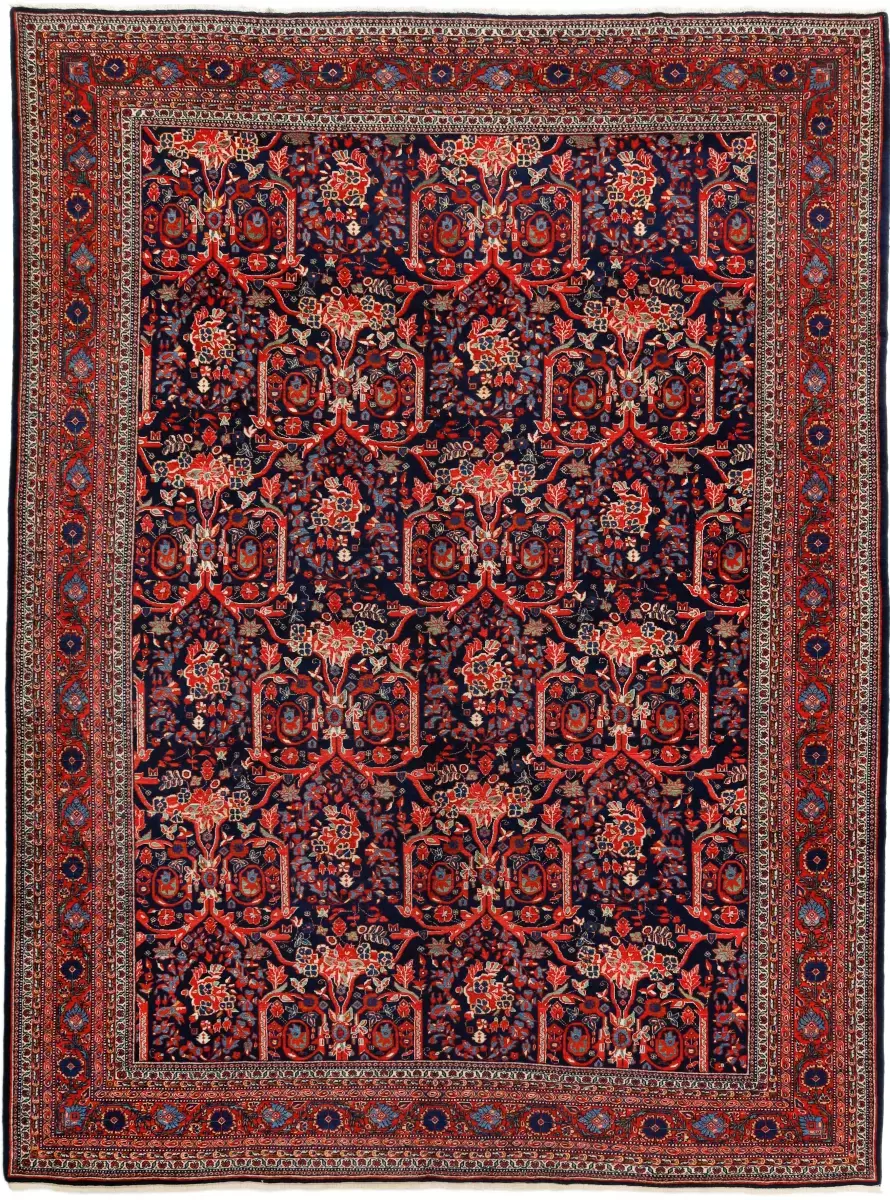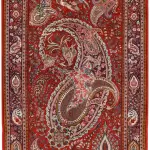Historical background of Kermanshah province
Kermanshah province in the far western part of the country has an internal border with the provinces (Lorestan, Kurdistan, Ilam, Hamadan) on three sides and an international border with Iraq on one side. In the past, this province was one of the centers of the Sassanids, and from this period, many valuable monuments such as the Bostan Arch, the Biston inscription, and the Anahita Temple have remained in this province, and during various centuries, due to its special strategic position, this city has It has been of special importance. Today, it is considered one of the most important cities in western Iran. Kermanshah has been nicknamed the India of Iran due to its diversity of climate, ethnicity and religion, because it has four seasons at the same time. For example, Qasr Shirin has a warm climate, Sanghar and Paveh have a cold climate, and Kermanshah has a moderate climate. In this province, Kurds, Persians, Turks and Arabs live together. It also has a lot of variety from the point of view. For example, the followers of Shia, Sunni, Ahl al-Haq, Christian and Jewish religions live a harmonious life together in this province. The majority of people in Kermanshah speak Kurdish.
Arts and crafts in Kermanshah
Handicrafts of Kermanshah, along with its edible products, creates a lot of diversity for fans of Kermanshah souvenirs. The city of Kermanshah can be called the cradle of handicrafts in the country due to its civilization and special geographical location. From the very beginning, the native people who lived in this area, according to their talent and the various raw materials that were available to them, created beautiful handicrafts in their favorite fields, and this was the reason for the prosperity of handicrafts in this area. Also, one of the other reasons for the growth of handicrafts in Kermanshah province was its commercial importance, which attracted many artists and craftsmen. The production of these beautiful handicrafts continues in Kermanshah and attracts the attention of travelers and tourists. The most prominent handicrafts of Kermanshah province are: rugs, carpets, giweh, jajim, hand-woven fabric, felt, leather products, making local ornaments, jigh weaving, traditional weavings (roduzi), embossed flower rugs, basket weaving, textiles (wave weaving and pyramid weaving). ), that the production of these products is popular in all the cities of the province.

Carpet weaving and its history in Kermanshah
In all the villages and nomads who have preserved their connection with their past, history and cultural identity, the production of carpets, rugs, jajims and other handwovens is a principle. Many products are lagging behind in the competition with machine industries, but carpet is a different matter because of its special quality that has made it a product according to the taste and liking of people of every period and every climate. Among handicrafts and traditional crafts, carpet has not only not lost its importance, but every day it gains more value in different aspects. In Kermanshah, examples of urban carpet weaving and the influence of regions such as Arak, Hamadan, Bijar and even Kerman can be seen. In general, the original and real carpet weaving of Kermanshah should be sought in the rural areas and their roots in the wider field of nomadic carpet weaving, which joins the historical and old carpet weaving of Iran. Although today, nomadic carpet weaving is limited in a specific geographical area, but nomadic carpet weaving culture and their continuous villages know no borders. This is why these carpets are related to Kurdish carpets on the one hand, and on the other hand, they are related to the carpets of Central Province, Hamadan and other nomads of Iran.
Since Kermanshah is located on the highway of Iran and Mesopotamia, during the Safavid era, it was very important for the export of foreign goods, and therefore the trading market in Kermanshah was very hot, so that from foreign goods to daily necessities in the market It is found and this area benefits from a lot of wealth. Among these goods are carpets, sheep and wool, and of course, sheep's wool has been an incentive to breed them for export. It is obvious that a share of this amount has been allocated to domestic production and has boosted the knitting industries such as carpet weaving, felt weaving, carpet weaving, etc. Kurds have been a people who adhere to nomadic traditions, so they have always needed a variety of useful woven products. 18th century hand-woven carpets with garden or flower motifs, commonly known as Kurdish rugs. When large numbers of Eastern rugs were introduced to Western markets in the mid-19th century, Kurdish rugs became recognized as a distinct type, and authors attempted to classify Kurdish rugs according to their geographic location. The production of Seyyed Abdulahi carpet, which was started by a manufacturer of the same name in Kermanshah, and the increase of other designs that were influenced by Saroq, Kerman and Bijar carpet patterns, actually show the history of urban carpet weaving in Kermanshah at the beginning of the current solar century.
Technical characteristics of Kermanshah carpet
In Kermanshah province, carpet weaving looms are vertical or standing and motifs are drawn on the carpet with the help of Turkish (symmetrical) knots. The method of weaving is twofold; In this way, after pulling the thick weft, a row of knots is woven and at the end, the thin weft is passed. In this way, one row of thick fabric and the next row of thin fabric pass through the chelas. Due to the mountainous nature of the region and the presence of severe cold, carpets are used as a warm and insulating underlay for the cold, which has long and thick piles. These carpets are provided from the region's own wool. The carpet of Kermanshah province is mainly of the type of rural hand-woven carpets, fleshy and with long piles. The raw materials needed are made from local wools, but apparently, the consumption of Kermanshah's high-quality wools, which is one of the best breeds of woolly sheep in Iran, has been reduced to a minimum, and the consumption of tannery fibers and waste from textile factories and synthetic fibers has become extremely popular.
Designs and motifs in the Kermanshah carpet
In the carpet weaving culture of Kermanshah, the word "flower" is used to mean pattern. If in Gul Akbarabad and... the meaning of Gul is the general plan of the carpet. Also, Rize Gol means small carpet patterns; But these two words (flower and small flower) sometimes mean a certain role or sub-role. These motifs and designs are an innovative work of the native people of the region and have their own diversity and characteristics, in a way that cannot be found in other regions. Naqsh (bazobandi), which is also called Sanghar (sweet sugar) in some villages, is one of the motifs that still has its own market. Common maps of the region consist of several well-known patterns, which include: Dargol, Bazobandi, Samavari, Abdullahi, Akbarabad, Hosseinabad, Kiunani (which merchants and dealers know as Khanumabad and Takht Jamshidi). These motifs include some small motifs, which we mention a few of them: Paw, Hoz, Masi (Fish), Melochek (Sparrow), Chirag, Moon, Bear, Hook, Hammer, Bazo (Rodneh), Shamamah (Handle), Turtle, earring, four eyes, small flower, armband, dargol, wing, bread, moon, shawl, sunbed, yoke (chest and icebox), samovar, mosque, window, pearl flower, bell flower, flower collar, cat's paw, mini and the flag
The well-known local maps that bear the names of certain villages are a clear proof of the antiquity and originality of the art of carpet weaving in Kermanshah. Among these motifs are: maps of Kiunani, Hosseinabadi, Akbarabadi, etc., which are named after the villages of Kiunan, Hosseinabad and Akbarabad. The villages whose names are on these maps were the birthplaces of these maps, or their weavers may have been more advanced or skilled in this matter.
Harsin Kermanshah handwovens
In Kermanshah province, the name Harsin is associated with carpet. Carpet weaving has a long history in this region and today Hersin is one of the major centers of carpet production. The motifs of the Harsin rug are very diverse and consist of many patterns and sub-patterns. Motifs such as Marghabi, Mel Chifete, Samavar, and Ganesheg are among the famous motifs of Harsin's clothing. Harsin rug is of high value because of its special abstract designs and motifs that are derived from the weaver's mentalities and his environment and also in terms of the use of high-quality wool. From the past to the present, the carpet is the decoration of the walls and the most charming underlayment of the homes of Iranians.
Sanandaj (Sane) and Bijar Kurdish braids are unique and very different from each other. One of their characteristics is their parallel knot, that is, the creation of a diagonal line every time they are tied, which can be seen in most nomadic braids, including in the Jaff region of Iran and Ghazian. Turkey Hill is mainly observed. Kermanshah carpet has a special design, color and texture, and it can be claimed that it has its own birth certificate. Especially in the carpet of Sanghar and Kilai region which is unique in its kind. One of the important features of the carpet is that its texture does not continue in several different seasons. For this reason, in the cold regions of the province, such as Sanghar, Kilai and Kangavar, people like In the cold season, they could rarely go out, they turned to weaving carpets and besides creating beautiful works and designs, they also helped the family economy.
The texture of the carpet has had a great impact on the spirit of the people and their affairs, and the texture of the carpet has been considered from a mystical, spiritual and psychological point of view. Because the texture of the carpet and its various colors have elevated the soul and spirit of the weaver. It is noteworthy that the requirements of carpet weaving are melodious and musical, and women, in addition to working at home, weave carpets, and this spirit Work and efforts were transferred to other family members
You can inquire about Buying Handwoven Carpets , Buying Handwoven Kilim and Mats , and Buying Handwoven Pictorial Rug Tableaus online from the Hoveida Carpet Store and register all your orders and Wherever you are in the world, deliver it to the desired address in less than 4 working days.
If you are interested in reading other articles in the field of Handwoven carpets or Handwoven Pictorial Rug Tableaus , please refer to Hoveida Carpet Commercial .
Leave a comment
Your email address will not be published. Required fields are marked *












